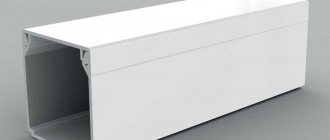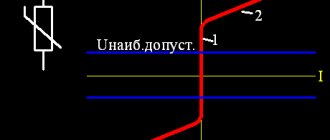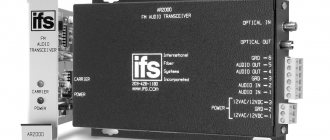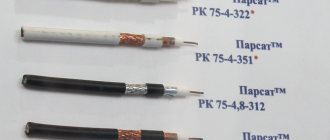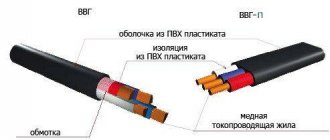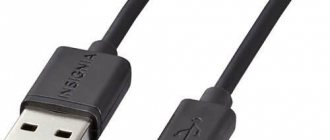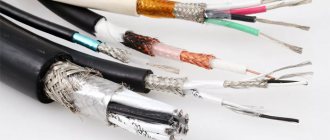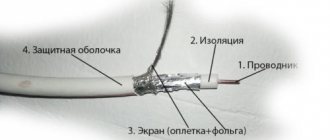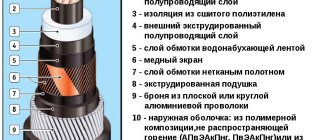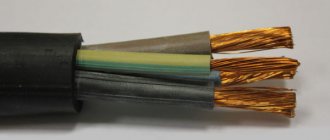RJ11 RJ12 - differences and similarities
These standards have some similarities and differences:
- RJ11 and RJ12 use the same 6-slot connector.
- The difference between RJ11 and RJ12 is visible solely in the number of contact conductors. In RJ12, all three pairs of contacts are used, in contrast, in RJ11, out of 6 available slots, 2 are not used.
External differences between connectors
- RJ11, like RJ12, is most often used in telephone systems. However, RJ12 is also found in other configurations.
- RJ11 is common in residential buildings, while RJ12 is not often found there, except in large companies.
- Both connectors use special crimping tools to install the RJ series. There are universal crimping pliers that allow you to crimp a variety of RJ-11, RJ-12, RJ-45, 4P4C connectors, and a crimping tool that only crimps a specific type of connector.
Tools for servicing this type of cable
The connectors are made of transparent plastic; inside there are built-in contacts in the form of knives, which, when crimped using a special tool, cut through the conductor insulation.
There are several types of RJ series connectors: 4P4C, RJ-11 6P2C and 6P4C, RJ-12 6P6C, RJ-45 8P8C, 10P10C:
The 4P4C connector, another name for RJ-9, is used mainly for connecting handsets to telephone sets; these are the smallest connectors in the RJ series, they have four lamellas and four contacts.
RJ-11 connectors, these connectors are used to connect telephone cables and connect landline phones, RJ-11 plugs come in two types: two-pin, marked 6P2C and four-pin, marked 6P4C.
RJ-12 connectors, also known as RJ-25, have six pins, are marked 6P6C, and are mainly used to connect system phones with a six-pin connector.
To install RJ-11 and RJ-12 connectors, use a flat telephone cable with four or six cores; you can also use a two-pair UTP twisted pair cable.
RJ-45 connectors, have eight contacts, are marked 8P8C, are intended for connecting telecommunications equipment: computers, sockets, network switches, patch panels. These connectors are divided into several types, depending on the cable used:
RJ-45 connectors for single-core cable, where the conductor has a solid conductor.
RJ-45 connectors for a multi-core cable, where the conductor consists of several conductors intertwined.
RJ-45 connectors are universal; the contacts of these connectors have three blades, which allows them to be used for both single-core and multi-core cables.
Externally, RJ-45 connectors for different cables are no different, the difference is in the location of the contact blades that cut through the cable insulation.
The difference between the universal RJ-45 connector and the connector for single-core and multi-core cables.
Shielded RJ-45 connectors are used with shielded twisted pair FTP cable to protect against interference and radio interference.
RJ-45 connectors with insert, the insert simplifies the installation of the connector on the cable.
Category 6 RJ-45 connectors with insert, used in Fast Ethernet and Gigabit Ethernet networks, data transfer rates up to 1 Gbit/s.
Category 6 RJ-45 connectors with insert.
10P10C connectors, also known as RJ-50, have ten contacts and are used to control uninterruptible power supplies, barcode scanners, and medical equipment.
For RJ-45 and 10P10C connectors, there are rubber caps with different color coding that prevent the cable from kinking and further damage.
A special crimping tool is used to install RJ series connectors. There are universal crimping pliers, they allow you to crimp all types of RJ-11, RJ-12, RJ-45, 4P4C connectors, there is also a crimping tool that crimps only one specific type of connector.
RJ series connectors in our catalog
Tool for crimping RJ connectors in our catalog
We are waiting for you at our sales offices.
Connector Standards
Even with apparent similarities, these connectors have differences in standards.
RJ-11
A 6-position 2-pin plug is provided under the RJ11 interface. In modern practice, it can also be a 2-pin and 4-pin connector (called RJ11 and RJ14, although hardly anyone knows the latter name). In devices with an analog operating principle, in any case, only 2 central contacts are used.
RJ-11
RJ-12
The most significant differentiating feature is that RJ11 actually exists, while the popular name RJ12 actually replaces RJ25. There is a big difference between what is said and the interface that is actually applied.
RJ12 complies with 6P6C wiring standard. It follows that the connector also has 6 wires, occupying all available contacts.
You may be interested in Features of calculating a voltage divider
Any plug with 6 positions can be crimped using the same tool. The matrix contains all 6 positions and is only used to touch fewer conductors on the plug. The positions at the edge of the matrix do not perform any useful action. It follows from this that it is better to use 6-pin plugs for more even wear of the plug, but in fact, the extreme positions of the matrix always suffer more wear than those in the central position.
Important! If such a plug is to be inserted into an 8-position socket, it is necessary to select a plug with a well-designed plastic sidewall design.
RJ-12
Purpose of use
Although there are some distinctive features, these two standards are used in the same communication systems. However, RJ12 is also used in other configurations. In systems with touch-tone telephones and small PBXs, two of its “extra” contacts can be effectively used. RJ12 has not yet gained popularity, and only installers who cooperate with telephone networks of large companies work closely with it. In turn, RJ11 has a relatively wide range of applications, because the standard is mounted on most telephones and telephone cables. For RJ12, the cable pinout is no different from the cable for RJ-11.
RJ 11 cable pinout
The most popular connector is RJ-11. Only 2 of its contacts are used to operate telephone networks. RJ-12 got its name due to its external similarity to RJ-11. In fact, according to the official classification, this connector is RJ-12.
RJ 11 cable for telephone communication
The information that the RJ 11 telephone cable is used to connect communication devices to the network is well known to everyone, but the details of this topic remain a mystery to ignorant citizens.
General concept of RJ 11 cable
First, let's decipher the abbreviation RJ - REGISTERED JACK. We are talking about a standardized interface that allows telecommunications to be connected. There are several types of modular connectors, the RJ11 specification is a socket with a plug that has a pair of conductors and six pins.
In practice, some cables are interchangeable, since they differ only in the number of contact plugs. For example, an RJ 14 telephone cable has 4 plugs, and its RJ11 only has 2, there is also an RJ25 modification with 6 plugs.
If we are talking about classic telephony, then it is enough to use cables with a pair of central contacts. A model with 4 wires will be in demand when creating analog telephony with a four-wire circuit. In other words, a 4-wire telephone cable is required when connecting a telephone, in accordance with the “secretary-director” scheme. It is also relevant when creating system four-wire telephony in the case of using and programming a digital PBX.
Replacing the RJ 11 cable
To replace a telephone cable, you only need to understand the color scheme. The line is connected to the green and red wires (Fig. 2), which in the case of RJ-11 corresponds to the third and fourth pins located in the middle. The 2-wire telephone cable has the following specification: green wire - “+”; red wire - " - ".
Attention! You can determine the polarity using a tester; if it is not available, you can stick the bare wires into a fresh cut of a potato, which will darken next to the positively charged wire.
RJ-11 cannot be used when organizing a structured cabling system. When replacing a telephone cable, you need to pay attention to the following points:
twisting of pairs is maintained near the termination point;
it is prohibited to remove the outer shell in volumes larger than required by the installation conditions;
twisted pairs must be the same size.
The use of RJ 11 cable when creating a telephone line complies with European standards. It is necessary to strictly follow the instructions, observe the color ratio when connecting twisted pairs and use high-quality consumables.

